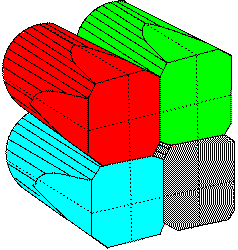
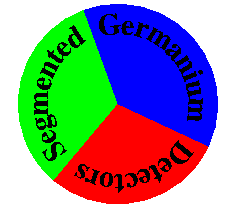
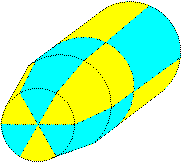



Segmenting germanium detectors reduces the Doppler broadening and the Isolated hit probability. It also makes improved pulse shape analysis and measurement of linear polarisation possible.
Tests have been carried out using different types of segmentation, the 4-fold segmented clover detector and the PT 6x2 detector
Segmented detectors will be used in the EXOGAM array, and in devices that would use gamma-ray tracking.
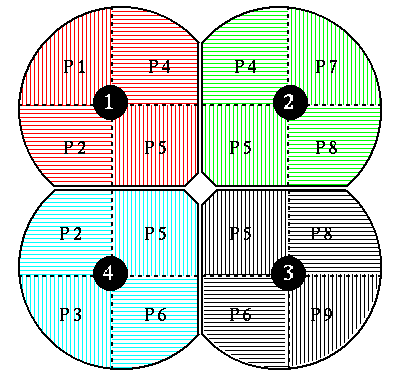
The following performance characteristics have been measured:
Energy signals (high resolution)

Position signals (low resolution)

Velocity of recoiling nuclei around 2-5% of the velocity of light, c.
Hence  -rays emitted from such a nucleus have an
appreciable Doppler shift.
This causes Doppler broadening
of spectral peaks.
-rays emitted from such a nucleus have an
appreciable Doppler shift.
This causes Doppler broadening
of spectral peaks.
Doppler Broadening equation:
 E
E = E
= E ( 0 ) (v/c) sin
(
( 0 ) (v/c) sin
( 

 )
)
Hence Doppler broadening is reduced due to the smaller
opening angles (
 )
of the crystal segments.
)
of the crystal segments.
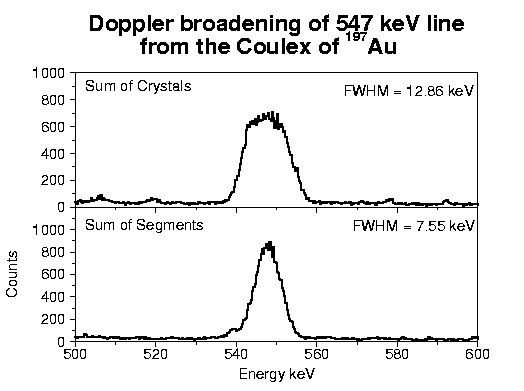
This accounts for the possibility of a second
 -ray hitting the same detector.
-ray hitting the same detector.
The original Clover detector could not distinguish between such an
event (b) , and a
 -ray Compton
scattering between two adjacent crystals (a) .
-ray Compton
scattering between two adjacent crystals (a) .
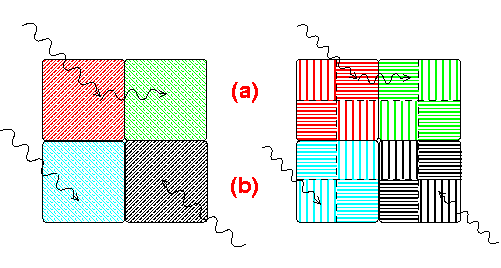
The improved granularity of the segmented Clover reduces this problem.
The linear polarisation of  rays can be investigated
via the asymmetry of the Compton scattering on atomic
electrons.The Clover detector can be used as a polarimeter.
rays can be investigated
via the asymmetry of the Compton scattering on atomic
electrons.The Clover detector can be used as a polarimeter.
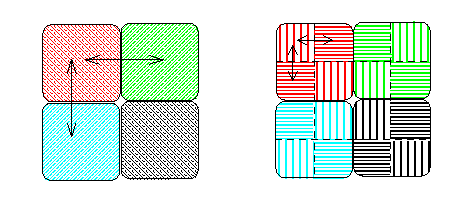
Advantages due to segmentation:
This detector consists of a single crystal segmented longitudinally along the outer contact into 6 segments. The crystal is also internally segmented to give a high resolution front and rear signal.

Centre contact resolutions:

Outer contact resolutions:

The segmented clover detector has been proposed for use in an array for the SPIRAL radioactive beams facility at GANIL. The EXOGAM WWW homepage can be found at http://ganinfo.in2p3.fr/exogam/home.html. A proposed design is shown below.
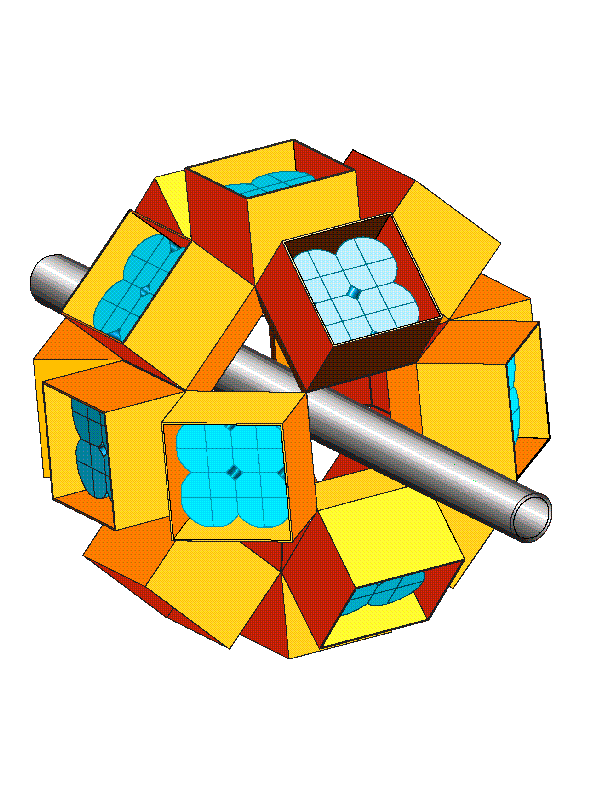
Further position information can be obtained by carrying out a pulse shape analysis in conjunction with the crystal segmentation This is based on the fact that interactions occurring in different parts of the crystal will produce preamplifier pulses with different shapes.
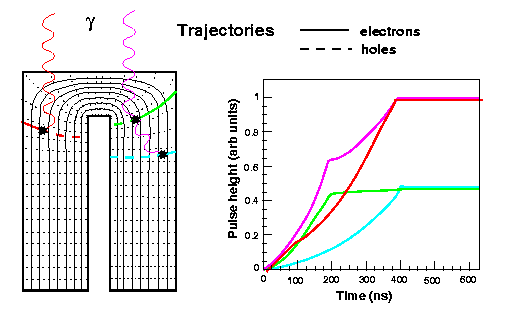
The extra position information obtained enables the interaction angle to be deduced more precisely and hence the resolution of the crystal lost due to Doppler broadening, can be recovered.
The PT-6x2 detector is the first attempt towards the development of a future European gamma ray tracking array.
The array would consist of a shell of germanium consisting of a combination of hexagonal and pentagonal crystals.
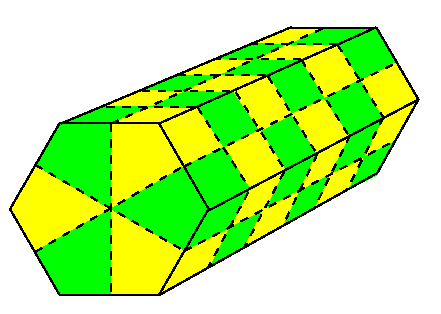
Each crystal is segmented into 36 regions
enabling complete  -ray tracking.
-ray tracking.
Last modified: 16 February 1998
Written by Sarah Shepherd, sls@ns.ph.liv.ac.uk